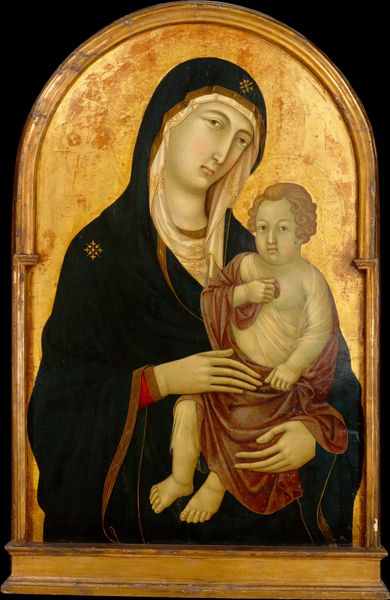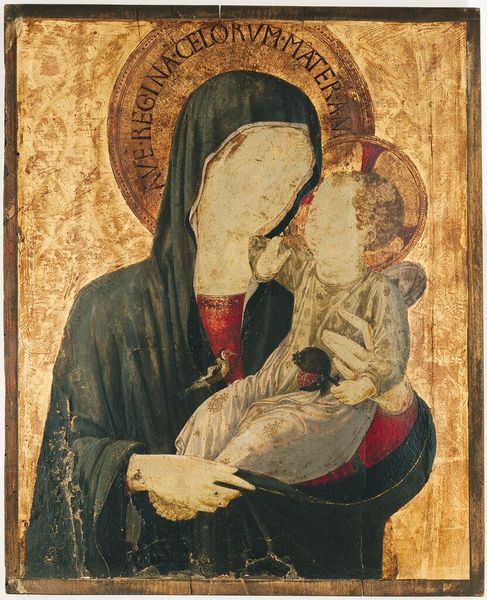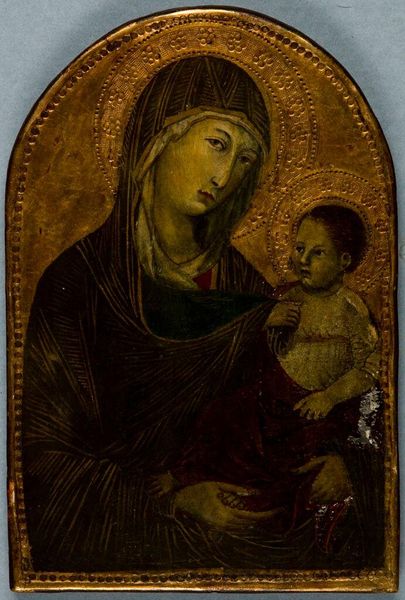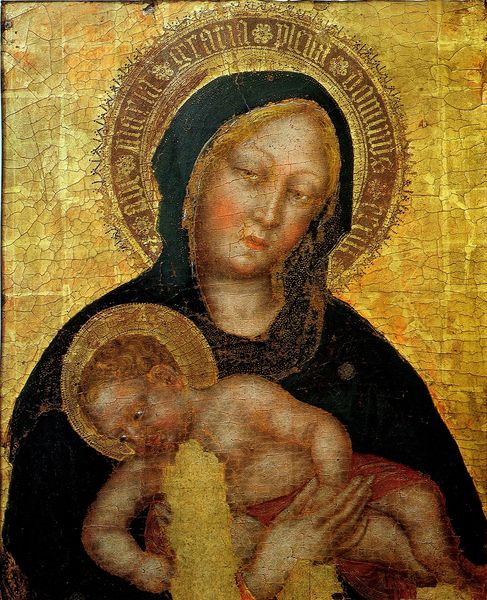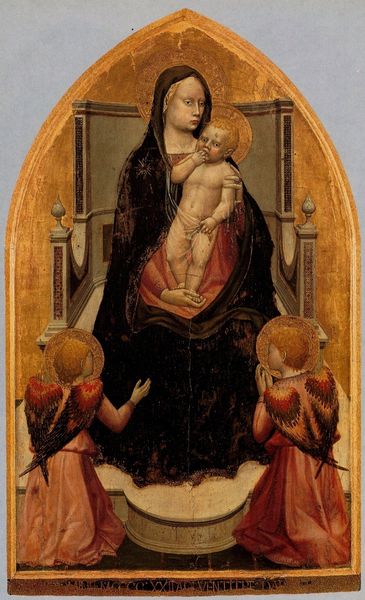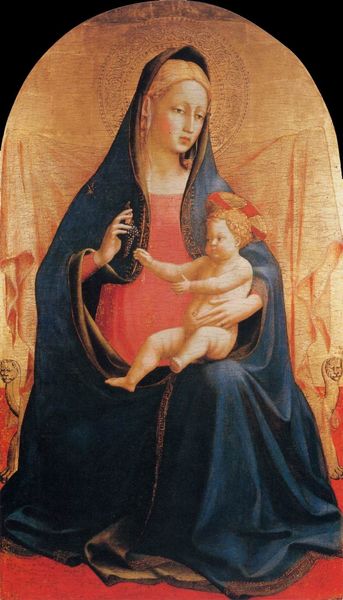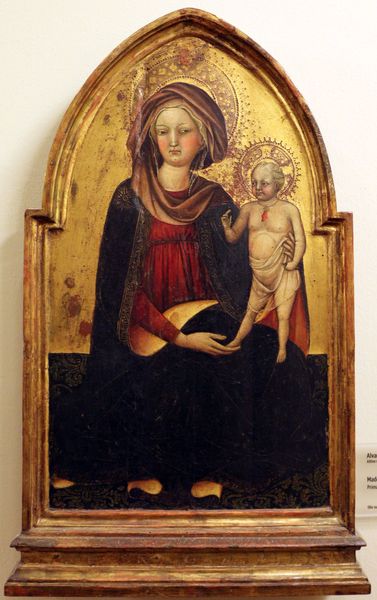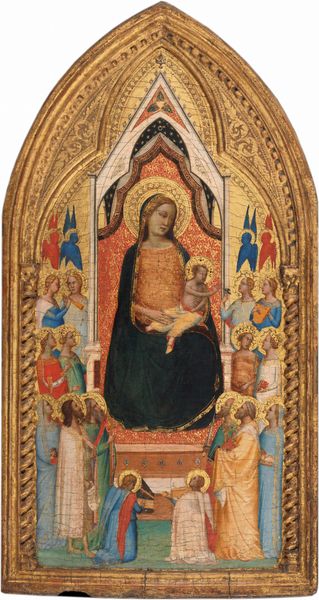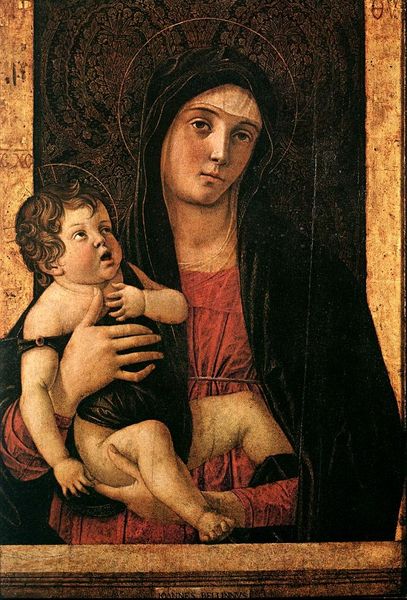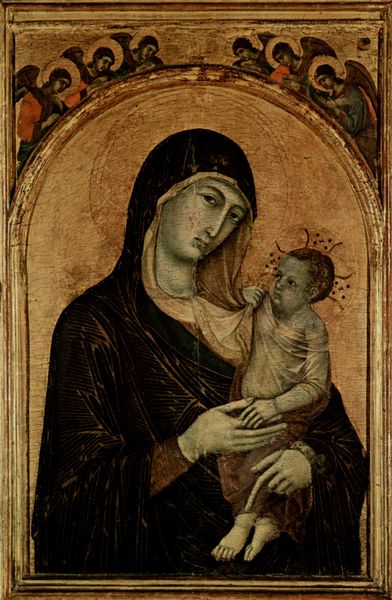
painting, oil-paint
#
portrait
#
painting
#
oil-paint
#
oil painting
#
christianity
#
history-painting
#
italian-renaissance
#
portrait art
#
virgin-mary
#
christ
Copyright: Public domain
Curator: Looking at "Nativity", possibly by Gentile da Fabriano, the mood strikes me as unexpectedly somber. There's a weight in the Virgin's expression, almost a premonition. Editor: Absolutely, and that gravity speaks volumes. The early Renaissance saw shifts in artistic representation. Let's contextualize this: Think of the socio-political role of religious imagery at the time. What did this representation of the Nativity offer viewers then, within its historical moment? Curator: Well, the somber tone could be interpreted as less about straightforward religious dogma, and more as reflection on the challenges motherhood can impose on women. Especially during these historical moments where life for anyone can be difficult. I can see a dialogue around the experience of bearing a child in a difficult context and its effects on the Virgin. Editor: I see what you mean. Fabriano likely had specific patrons and institutions in mind when creating such a portrayal. How do you think this Nativity would be received? Was it intended for public devotion, or was it commissioned for a private chapel of a wealthy family? That certainly changes our perspective. The subtle details probably served a crucial political function. Curator: The Virgin is cloaked in darkness, emphasizing her personal pain within her representation, especially when we notice the gold detail. Editor: Good point! What might gold accents signify here, politically and spiritually? Gold represents the divine, obviously. But perhaps also patronage? Curator: I am struck again by the heaviness of Mary’s garment. It’s so intensely dark, I feel it serves as a metaphor of grief for anyone looking at this piece from an emotional level. Editor: It does feel incredibly modern, with its subtle approach to human emotions. It also invites the modern audiences to relate from new levels and approaches to this art. We can certainly consider "Nativity" not just through the lens of religious history, but as a visual meditation on identity, emotional experiences, social responsibilities and spiritual power during the Renaissance.
Comments
No comments
Be the first to comment and join the conversation on the ultimate creative platform.
